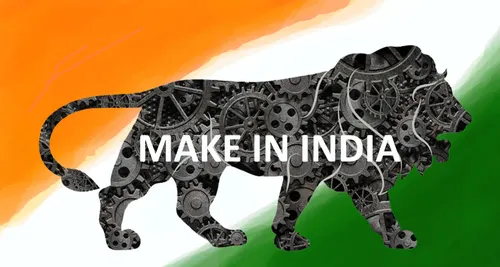
Transforming India into a Global Manufacturing Hub
The Make in India initiative is one of the most ambitious programs launched by the Government of India to boost the country’s manufacturing sector and create employment opportunities. Introduced by Prime Minister Narendra Modi on September 25, 2014, this initiative aims to position India as a global manufacturing and investment destination.
Objectives of Make in India
The key goals of the Make in India initiative include:
-
Enhancing Manufacturing Capabilities: Encouraging companies to set up production units in India.
-
Attracting Foreign Direct Investment (FDI): Simplifying policies to attract global investors.
-
Job Creation: Providing employment opportunities to millions of Indians.
-
Boosting Economic Growth: Strengthening India’s GDP by promoting industrial development.
-
Encouraging Innovation: Supporting research, development, and technological advancements.
Key Sectors Under Make in India
The initiative focuses on 25 key sectors, including:
-
Automobiles
-
Aviation
-
Textiles and Garments
-
Pharmaceuticals
-
Electronics
-
IT and BPM
-
Renewable Energy
-
Defense Manufacturing
-
Food Processing
-
Tourism and Hospitality
Impact of Make in India
Since its inception, Make in India has brought significant changes to the Indian economy:
-
Increased FDI Inflows: India has attracted billions of dollars in foreign investments.
-
Boost in Manufacturing: Several global companies have set up production units in India.
-
Job Creation: Millions of direct and indirect employment opportunities have been generated.
-
Strengthening Local Industries: Small and medium enterprises (SMEs) have received support for growth and innovation.
Government Initiatives Supporting Make in India
-
Production Linked Incentive (PLI) Scheme: Encourages domestic manufacturing with financial incentives.
-
Ease of Doing Business Reforms: Simplified licensing, tax benefits, and regulatory relaxations.
-
Skill India Mission: Providing workforce training for industries.
-
Startup India & Standup India: Promoting entrepreneurship and innovation.
-
Digital India: Strengthening digital infrastructure to support industries.
Challenges and the Road Ahead
Despite its success, Make in India faces challenges such as infrastructure bottlenecks, labor law reforms, and global competition. However, with continued policy support and investments in technology, India is on track to becoming a leading manufacturing hub.
Conclusion
Make in India is not just an initiative; it is a vision to transform India into a self-reliant and globally competitive economy. By supporting domestic production, fostering innovation, and encouraging investment, India is paving the way for a brighter and more prosperous future.
Let’s support Make in India and contribute to the nation’s growth!
Women empowerment is not just a phrase; it is a movement that aims to provide equal opportunities, rights, and freedom to women in all aspects of life. In a society where gender equality plays a crucial role in development, empowering women leads to a more prosperous and just world.
What is Women Empowerment?
Women empowerment refers to the process of enabling women to have control over their lives, make independent decisions, and access resources that help them grow personally, professionally, and socially. It includes providing women with equal rights in education, employment, healthcare, and social justice.
Importance of Women Empowerment
-
Gender Equality: Ensures that women and men have equal rights and opportunities in all fields.
-
Economic Growth: Encouraging women’s participation in the workforce leads to increased economic development.
-
Better Education & Health: Educated women contribute to healthier families and communities.
-
Reduced Gender-based Violence: Empowered women can stand against domestic violence and social injustices.
-
Stronger Communities: Women’s active participation in society fosters social harmony and national progress.
Key Initiatives Promoting Women Empowerment
Governments, NGOs, and organizations worldwide have launched various initiatives to uplift women:
-
Beti Bachao, Beti Padhao (Save the Girl Child, Educate the Girl Child): A campaign by the Government of India to promote girl child education and welfare.
-
Self-Help Groups (SHGs): Encouraging women entrepreneurs to start businesses and gain financial independence.
-
Women’s Reservation in Governance: Ensuring representation of women in politics and decision-making bodies.
-
Digital Literacy Programs: Providing women with digital education for better career opportunities.
-
Workplace Equality Laws: Ensuring fair pay, maternity benefits, and protection against harassment at work.
How Can We Contribute to Women Empowerment?
-
Educate Girls: Support initiatives that provide quality education to young girls.
-
Encourage Women Entrepreneurs: Support businesses owned and run by women.
-
Raise Awareness: Speak up against gender discrimination and social injustice.
-
Equal Opportunities: Promote fair hiring practices and workplace equality.
-
Support Women in Leadership: Encourage and vote for women leaders in politics and organizations.
Conclusion
Women empowerment is the foundation of a progressive and equitable society. When women are given the tools to succeed, the entire world benefits. It is time to break stereotypes, challenge biases, and create a world where women stand equal to men in every sphere of life.
Let’s empower women today for a better tomorrow!
